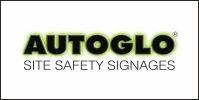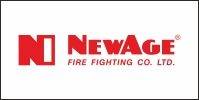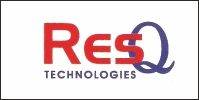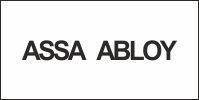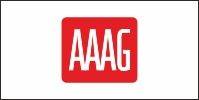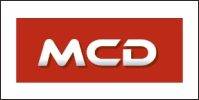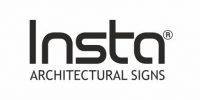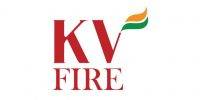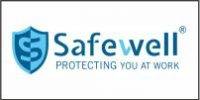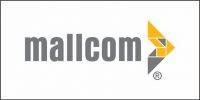 You’ve seen a lot of them in the past. It’s not unlikely that you’ve passed one or two of them while you’re on your way to work. Maybe for some of you, going to work means seeing them up close while they join metals or thermoplastics. You might have seen them standing on scaffolds or squatting on platforms just heating the day away with their tools.
You’ve seen a lot of them in the past. It’s not unlikely that you’ve passed one or two of them while you’re on your way to work. Maybe for some of you, going to work means seeing them up close while they join metals or thermoplastics. You might have seen them standing on scaffolds or squatting on platforms just heating the day away with their tools.
Welders perform one of the industry’s most dangerous tasks. Just imagine working close to heat for long hours each day. As if that’s not enough, the danger of blinding yourself on the job is very high with the sparks all flying from the heating tool.
But the greatest hazard that comes with welding is fire. Besides having the ability to burn a worker alive, welding can turn a building to ash in a matter of minutes. But with proper personal protective equipment (PPE) and training, a welder can’t go wrong in ensuring fire safety while performing his tasks on the job.
PROPER PPE
Like any task on the job, welding requires you to wear proper PPE. Normal attire is usually flammable and fire is the first thing you want to avoid here.So wear that flame-resistant clothing. You’ll be fine with a tightly woven shirt and denim pants. But there’s nothing like wearing a jacket specially made for welding. If you find it hot and too heavy, you’ll be glad to know that a lot of welding jackets out there are lighter but still flame-resistant.
Of course a welding PPE is not enough without a good pair of heat-resistant gloves. Thanks to advancements in technology, welding gloves now come in different designs made specifically for specific welding processes. Some of them include TIG gloves, heavy-duty MIG/stick gloves and medium-duty MIG gloves.
Leave your tennis shoes and cowboy boots at home. Go for high-top leather boots or shoes that are (again) specially designed for welding. You’ll thank yourself you left your fashion sense at home once you realize how many smoldering treats your feet miss from that welding tool.
Welding is always seeing the world at a different perspective. This can never be more true than with your protective helmets and/or face shields. You know why you need them so wear them! You can even go the extra mile by donning auto-darkening helmets. Such helmets have lens that automatically darken as a way of adjusting to the brightness of the sparks.
Fatigue and too much heat can be your gateway to accidents. While it’s helpful to divide your task into segments by taking breaks, you might want to consider wearing a respirator. This is a decision you and your employer must discuss, especially if you think that your work area has poor ventilation.
 WELDING SAFETY MEASURES
WELDING SAFETY MEASURES
Here are some more welding safety measures you must follow to prevent fire and other accidents because of welding:
Always work with a hot work permit.
This is a permit you secure before doing welding operations on the job. A competent person inspects the work area and notes down all the precautions you have to take. The written permit serves as your guide to prevent hazards while welding.
Get rid of clutter.
Your work area must only have room for equipment and tools needed in the workplace. The rest should go as they may cause accidents like tripping and even fire if they’re highly flammable.
Have a fire watch with you.
In some occasions, you need to have a fire watch with you while you perform your task. This is often the case if a lot of flammable materials are present in the work area. The fire watch or firewatcher’s job is basically to watch for fires while you weld. They are assigned to sound the fire alarm and use the fire extinguisher in the event of fire. They must stick around and guard the work area for at least 30 minutes after the welding job is do
Hazardous chemical management: Plan and Worker Training
Many have looked into some facts about ammonia, we have yet to discuss some tips on handling chemicals in general. Anyone who works with chemicals knows how toxic, reactive, flammable and explosive they can be. But not every employee tasked to work on them is well informed and trained in managing them. By “work with” I mean to use, store, manufacture, handle or move these harmful chemicals.
WRITE IT DOWN!
First thing’s first. Have a written plan of how you’ll identify and analyze hazards in your workplace. Your plan should indicate how you’ll involve your employees in this process.
Include also in your plan some written procedures that instruct about safe ways in performing tasks involving chemicals. The procedures you’ll develop and implement should be accurate and clearly written. Remember also that you should revise them periodically to make sure that they reflect current operations.
Your documents should also include an emergency plan for your entire worksite. If you’re working in a laboratory, for instance, then you should create an emergency plan for the entire lab. Emergency-escape procedures, employee rescue and medical duties and instructions for employees reporting emergencies are some of the written requirements in your emergency plan.
WEAR IT!
Part of the right management of harmful chemicals is wearing the proper personal protective equipment (PPE). Equipment vary depending on the type of chemical and length of exposure. Some basic PPE for chemicals are air supplied respirator, full body covering and disposable shoes.
TRAIN THEM!
There’s no better way to educate your employees in the proper management of chemicals than with training materials. You should keep a record of employees who have undergone initial trainings and refresher trainings. Document these regularly along with training dates and means you used to verify that they understood the trainings.
Another document you should provide your employees with is the MSDS or the Material Safety Data Sheets. With the use of this document, they can learn more about the characteristics of the chemicals they have to work on. They can also refer to it to know or be reminded about the proper PPE and emergency procedures.












